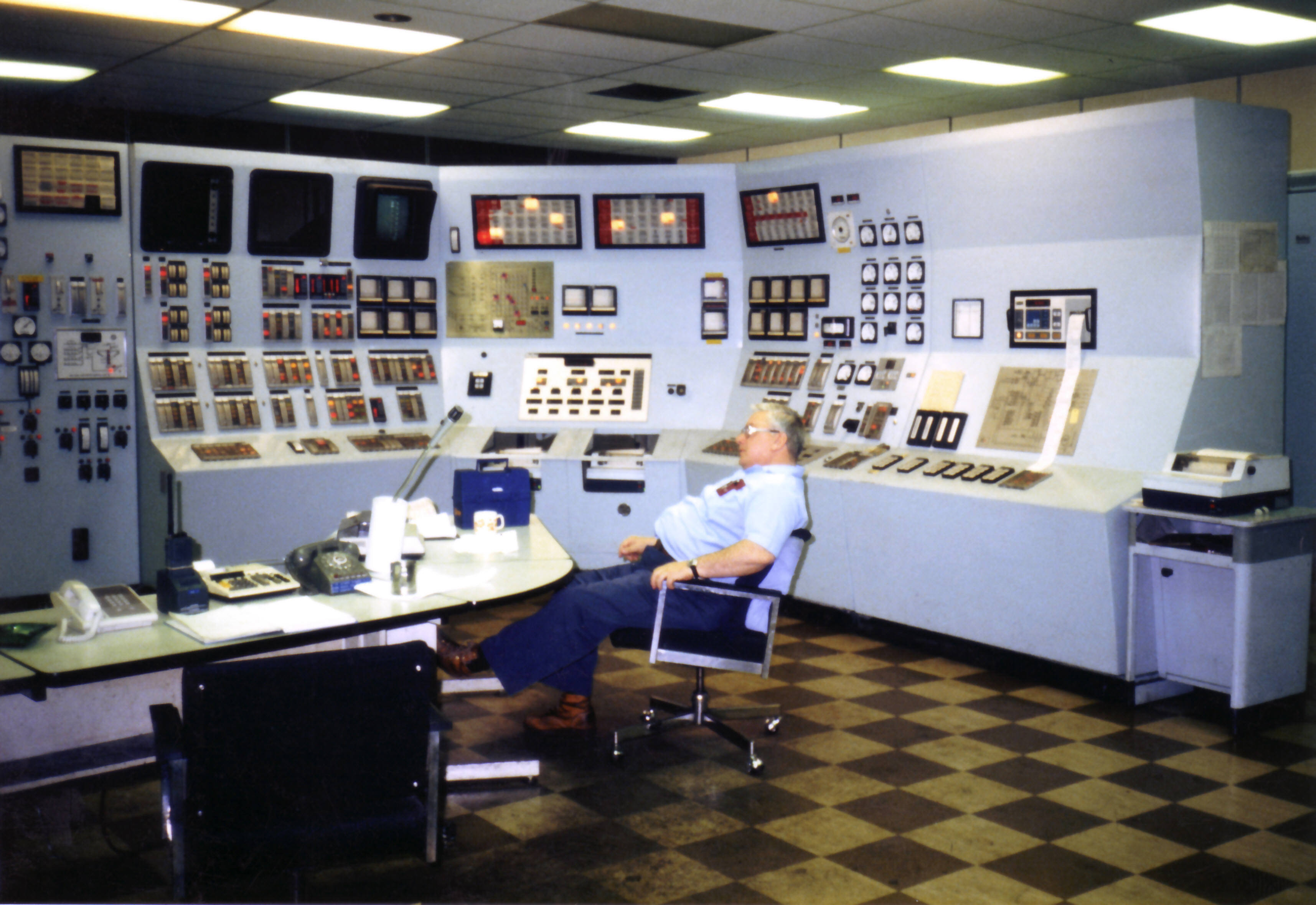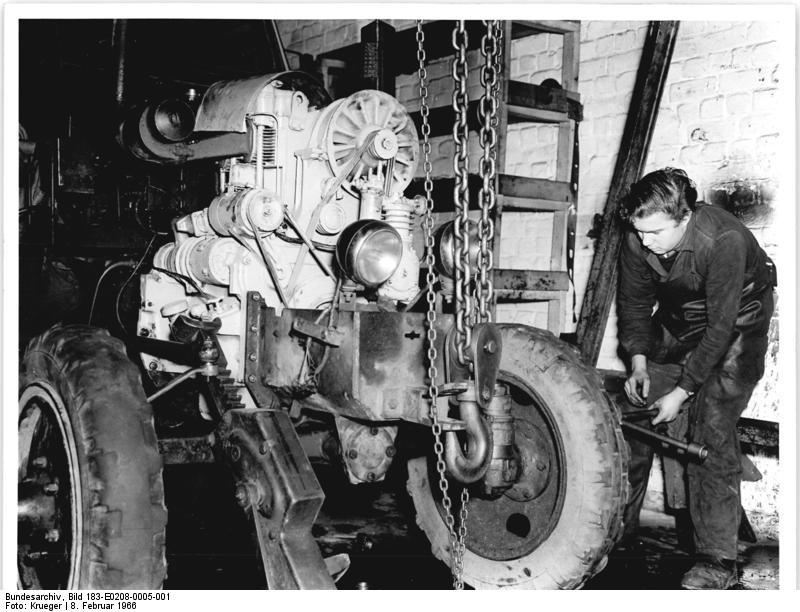|
Fieldbus
Fieldbus is the name of a family of industrial computer networks used for real-time distributed control. Fieldbus profiles are standardized by the International Electrotechnical Commission (IEC) as IEC 61784/61158. A complex automated industrial system is typically structured in hierarchical levels as a distributed control system (DCS). In this hierarchy the upper levels for production managements are linked to the direct control level of programmable logic controllers (PLC) via a non- time-critical communications system (e.g. Ethernet). The fieldbus links the PLCs of the direct control level to the components in the plant of the field level such as sensors, actuators, electric motors, console lights, switches, valves and contactors and replaces the direct connections via current loops or digital I/O signals. The requirement for a fieldbus are therefore time-critical and cost sensitive. Since the new millennium a number of fieldbuses based on Real-time Ethernet have bee ... [...More Info...] [...Related Items...] OR: [Wikipedia] [Google] [Baidu] |
Distributed Control System
A distributed control system (DCS) is a computerised control system for a process or plant usually with many control loops, in which autonomous controllers are distributed throughout the system, but there is no central operator supervisory control. This is in contrast to systems that use centralized controllers; either discrete controllers located at a central control room or within a central computer. The DCS concept increases reliability and reduces installation costs by localising control functions near the process plant, with remote monitoring and supervision. Distributed control systems first emerged in large, high value, safety critical process industries, and were attractive because the DCS manufacturer would supply both the local control level and central supervisory equipment as an integrated package, thus reducing design integration risk. Today the functionality of Supervisory control and data acquisition (SCADA) and DCS systems are very similar, but DCS tends to be ... [...More Info...] [...Related Items...] OR: [Wikipedia] [Google] [Baidu] |
Network Topology
Network topology is the arrangement of the elements ( links, nodes, etc.) of a communication network. Network topology can be used to define or describe the arrangement of various types of telecommunication networks, including command and control radio networks, industrial fieldbusses and computer networks. Network topology is the topological structure of a network and may be depicted physically or logically. It is an application of graph theory wherein communicating devices are modeled as nodes and the connections between the devices are modeled as links or lines between the nodes. Physical topology is the placement of the various components of a network (e.g., device location and cable installation), while logical topology illustrates how data flows within a network. Distances between nodes, physical interconnections, transmission rates, or signal types may differ between two different networks, yet their logical topologies may be identical. A network’s physical topology ... [...More Info...] [...Related Items...] OR: [Wikipedia] [Google] [Baidu] |
Automation
Automation describes a wide range of technologies that reduce human intervention in processes, namely by predetermining decision criteria, subprocess relationships, and related actions, as well as embodying those predeterminations in machines. Automation has been achieved by various means including mechanical, hydraulic, pneumatic, electrical, electronic devices, and computers, usually in combination. Complicated systems, such as modern factories, airplanes, and ships typically use combinations of all of these techniques. The benefit of automation includes labor savings, reducing waste, savings in electricity costs, savings in material costs, and improvements to quality, accuracy, and precision. Automation includes the use of various equipment and control systems such as machinery, processes in factories, boilers, and heat-treating ovens, switching on telephone networks, steering, and stabilization of ships, aircraft, and other applications and vehicles with reduced hu ... [...More Info...] [...Related Items...] OR: [Wikipedia] [Google] [Baidu] |
Programmable Logic Controller
A programmable logic controller (PLC) or programmable controller is an industrial computer that has been ruggedized and adapted for the control of manufacturing processes, such as assembly lines, machines, robotic devices, or any activity that requires high reliability, ease of programming, and process fault diagnosis. Dick Morley is considered as the father of PLC as he had invented the first PLC, the Modicon 084, for General Motors in 1968. PLCs can range from small modular devices with tens of inputs and outputs (I/O), in a housing integral with the processor, to large rack-mounted modular devices with thousands of I/O, and which are often networked to other PLC and SCADA systems. They can be designed for many arrangements of digital and analog I/O, extended temperature ranges, immunity to electrical noise, and resistance to vibration and impact. Programs to control machine operation are typically stored in battery-backed-up or non-volatile memory. PLCs were first deve ... [...More Info...] [...Related Items...] OR: [Wikipedia] [Google] [Baidu] |
Local Area Network
A local area network (LAN) is a computer network that interconnects computers within a limited area such as a residence, school, laboratory, university campus or office building. By contrast, a wide area network (WAN) not only covers a larger geographic distance, but also generally involves leased telecommunication circuits. Ethernet and Wi-Fi are the two most common technologies in use for local area networks. Historical network technologies include ARCNET, Token Ring and AppleTalk. History The increasing demand and usage of computers in universities and research labs in the late 1960s generated the need to provide high-speed interconnections between computer systems. A 1970 report from the Lawrence Radiation Laboratory detailing the growth of their "Octopus" network gave a good indication of the situation. A number of experimental and early commercial LAN technologies were developed in the 1970s. Cambridge Ring was developed at Cambridge University starting in 1974. Et ... [...More Info...] [...Related Items...] OR: [Wikipedia] [Google] [Baidu] |
Analog Signal
An analog signal or analogue signal (see spelling differences) is any continuous signal representing some other quantity, i.e., ''analogous'' to another quantity. For example, in an analog audio signal, the instantaneous signal voltage varies continuously with the pressure of the sound waves. In contrast, a digital signal represents the original time-varying quantity as a sampled sequence of quantized values which imposes some bandwidth and dynamic range constraints on the representation. The term ''analog signal'' usually refers to electrical signals; however, mechanical, pneumatic, hydraulic and other systems may also convey or be considered analog signals. Representation An analog signal uses some property of the medium to convey the signal's information. For example, an aneroid barometer uses rotary position as the signal to convey pressure information. In an electrical signal, the voltage, current, or frequency of the signal may be varied to represent the i ... [...More Info...] [...Related Items...] OR: [Wikipedia] [Google] [Baidu] |
Digital Data
Digital data, in information theory and information systems, is information represented as a string of discrete symbols each of which can take on one of only a finite number of values from some alphabet, such as letters or digits. An example is a text document, which consists of a string of alphanumeric characters . The most common form of digital data in modern information systems is '' binary data'', which is represented by a string of binary digits (bits) each of which can have one of two values, either 0 or 1. Digital data can be contrasted with ''analog data'', which is represented by a value from a continuous range of real numbers. Analog data is transmitted by an analog signal, which not only takes on continuous values, but can vary continuously with time, a continuous real-valued function of time. An example is the air pressure variation in a sound wave. The word ''digital'' comes from the same source as the words digit and ''digitus'' (the Latin word for '' finge ... [...More Info...] [...Related Items...] OR: [Wikipedia] [Google] [Baidu] |
Microprocessor
A microprocessor is a computer processor where the data processing logic and control is included on a single integrated circuit, or a small number of integrated circuits. The microprocessor contains the arithmetic, logic, and control circuitry required to perform the functions of a computer's central processing unit. The integrated circuit is capable of interpreting and executing program instructions and performing arithmetic operations. The microprocessor is a multipurpose, Clock signal, clock-driven, Processor register, register-based, digital integrated circuit that accepts binary code, binary data as input, processes it according to instruction (computing), instructions stored in its computer memory, memory, and provides results (also in binary form) as output. Microprocessors contain both combinational logic and sequential logic, sequential digital logic, and operate on numbers and symbols represented in the binary number system. The integration of a whole CPU onto a s ... [...More Info...] [...Related Items...] OR: [Wikipedia] [Google] [Baidu] |
PID Controller
A proportional–integral–derivative controller (PID controller or three-term controller) is a control loop mechanism employing feedback that is widely used in industrial control systems and a variety of other applications requiring continuously modulated control. A PID controller continuously calculates an ''error value'' e(t) as the difference between a desired setpoint (SP) and a measured process variable (PV) and applies a correction based on proportional, integral, and derivative terms (denoted ''P'', ''I'', and ''D'' respectively), hence the name. In practical terms, PID automatically applies an accurate and responsive correction to a control function. An everyday example is the cruise control on a car, where ascending a hill would lower speed if constant engine power were applied. The controller's PID algorithm restores the measured speed to the desired speed with minimal delay and overshoot by increasing the power output of the engine in a controlled manner. The fi ... [...More Info...] [...Related Items...] OR: [Wikipedia] [Google] [Baidu] |
Availability (system)
Availability is the probability that a system will work as required when required during the period of a mission. The mission could be the 18-hour span of an aircraft flight. The mission period could also be the 3 to 15-month span of a military deployment. Availability includes non-operational periods associated with reliability, maintenance, and logistics. This is measured in terms of nines. Five-9's (99.999%) means less than 5 minutes when the system is not operating correctly over the span of one year. Availability is only meaningful for supportable systems. As an example, availability of 99.9% means nothing after the only known source stops manufacturing a critical replacement part. Definition There are two kinds of availability. * Operational * Predicted Operational availability is presumed to be the same as predicted availability until after operational metrics become available. Availability Operational availability is based on observations after at least one system h ... [...More Info...] [...Related Items...] OR: [Wikipedia] [Google] [Baidu] |
Maintenance (technical)
The technical meaning of maintenance involves functional checks, servicing, repairing or replacing of necessary devices, equipment, machinery, building infrastructure, and supporting utilities in industrial, business, and residential installations. Over time, this has come to include multiple wordings that describe various cost-effective practices to keep equipment operational; these activities occur either before or after a failure. Definitions Maintenance functions can defined as maintenance, repair and overhaul (MRO), and MRO is also used for maintenance, repair and operations. Over time, the terminology of maintenance and MRO has begun to become standardized. The United States Department of Defense uses the following definitions: Federal Standard 1037C and from MIL-STD-188 and from the Department of Defense Dictionary of Military and Associated Terms * Any activity—such as tests, measurements, replacements, adjustments, and repairs—intended to retain or restore a ... [...More Info...] [...Related Items...] OR: [Wikipedia] [Google] [Baidu] |




